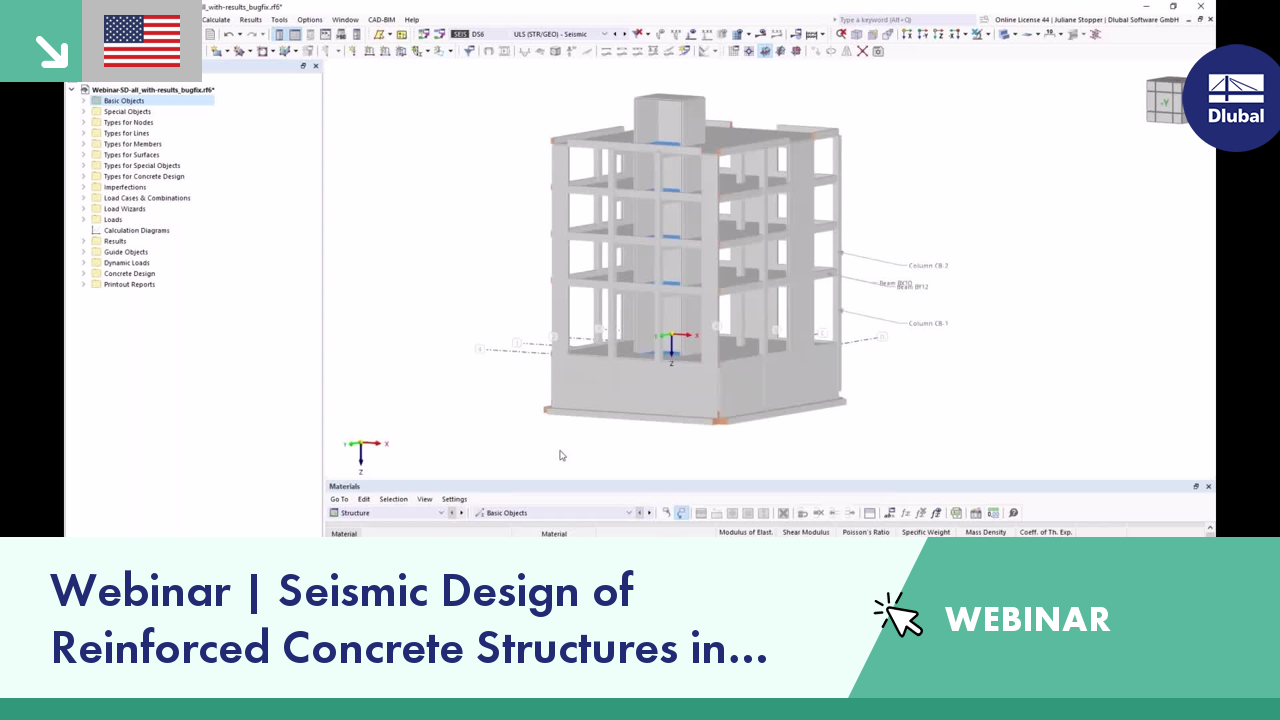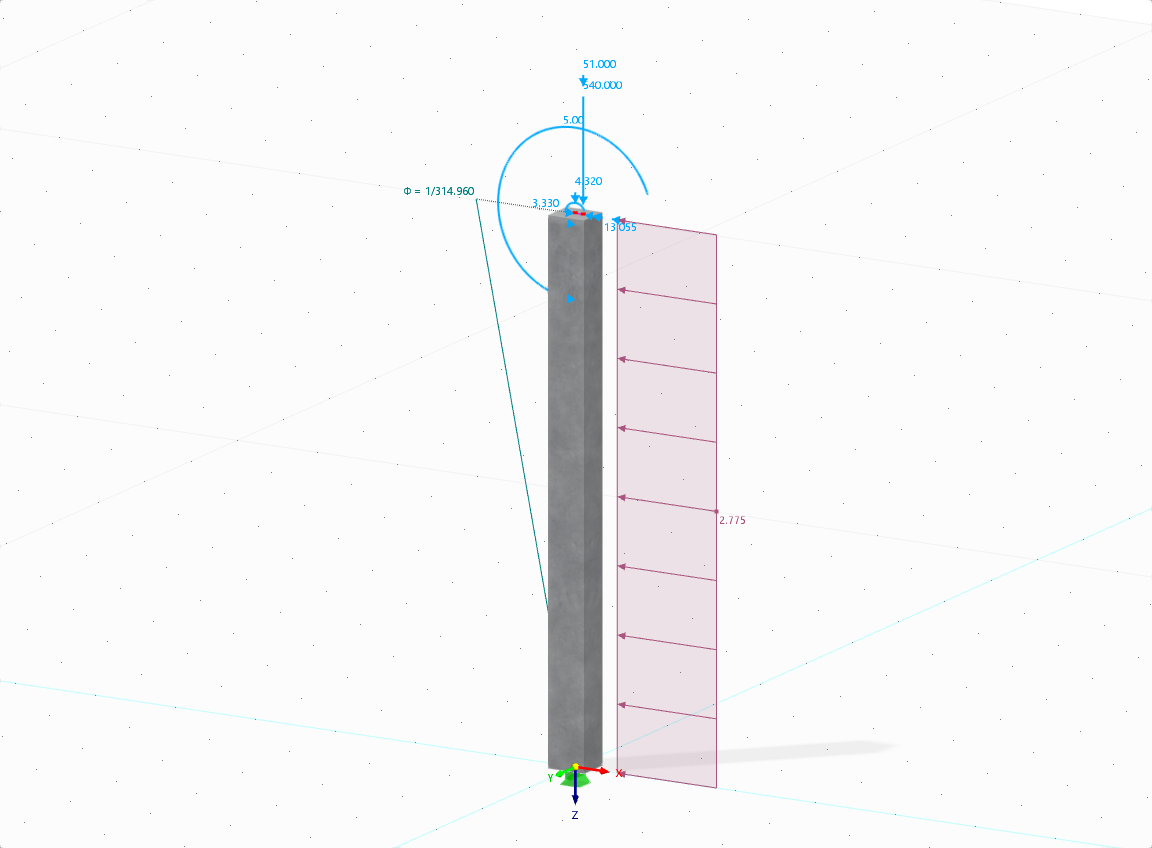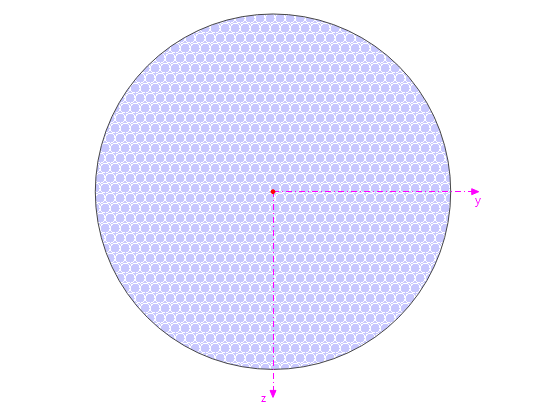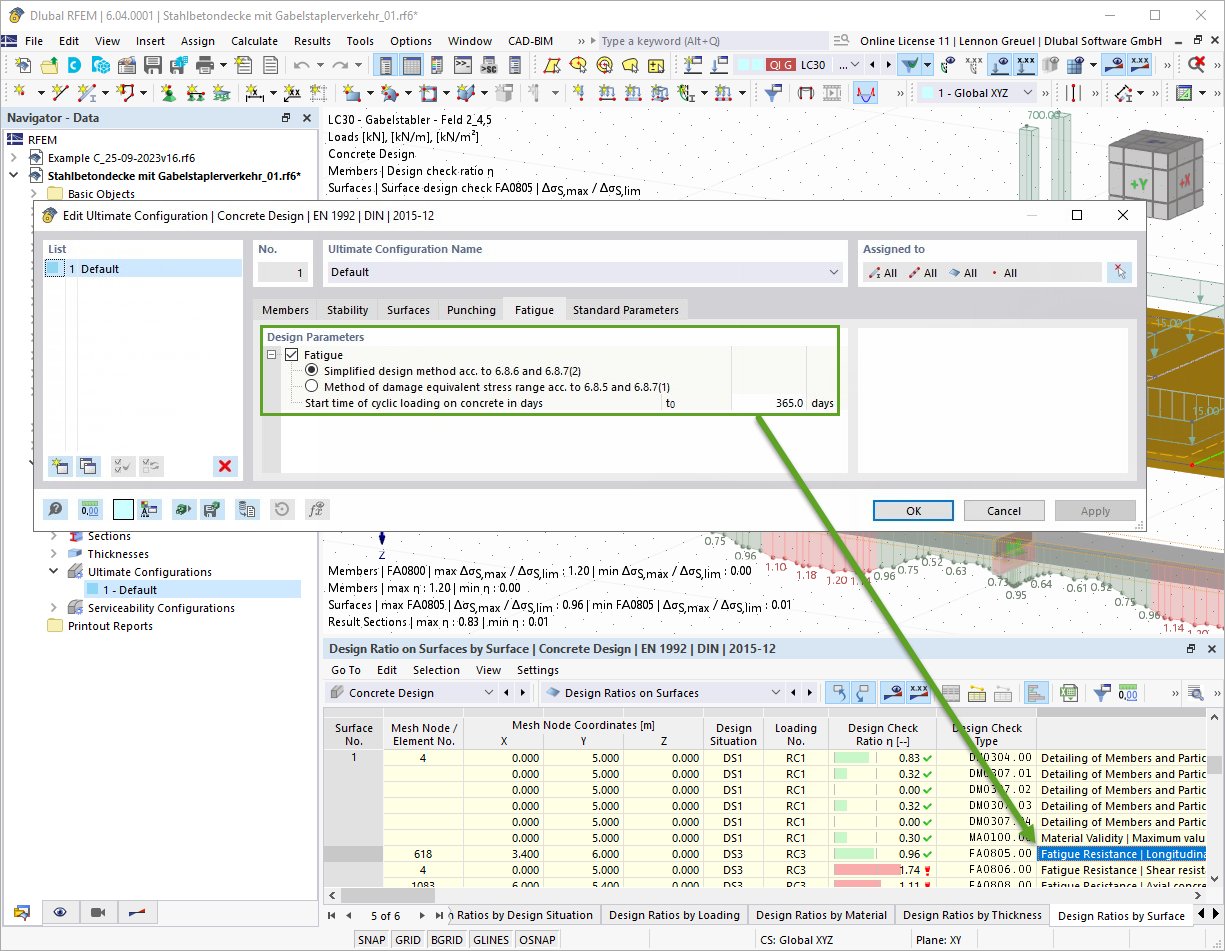Die skulpturale Form des Gebäudes bildet ein "E", einer der vier Buchstaben des Wortes H-O-M-E. Die Umsetzung des Begriffs durch insgesamt vier verschiedene Hochhäuser ist eine wesentliche Leitidee des Konversionsprojektes FRANKLIN in Mannheim.
Im kompletten Erd- und dem 1. Obergeschoss werden Maisonettewohnungen mit deutlich größeren Grundrissen als in den weiteren Obergeschossen realisiert. Dies führt - neben architektonischen Gründen - dazu, dass das Gebäude ab dem 2. Obergeschoss nach innen auf eine Grundfläche von 20 m x 48 m verspringt. Ab dem 2. OG ändert sich der Gebäudegrundriss durch die Versprünge bedingt nach jedem zweiten bzw. dritten Geschoss. Dies führt auf beiden Längsseiten zu mehrgeschossigen Gebäudeüberhängen. Im 1. UG befinden sich neben den Tiefgaragenstellplätzen auch die Mieterkeller wohingegen das 2. UG ausschließlich als Tiefgarage genutzt wird.
Konstruktion
Das aus fünfzehn Obergeschossen und zwei Untergeschossen bestehende Wohngebäude wird in Massivbauweise errichtet. Die tragenden Außen- und Innenwände in den Obergeschossen werden aus Stahlbeton, die Außenwände in den Untergeschossen als wasserundurchlässige Stahlbetonkonstruktion hergestellt. Als Geschossdecken kommen zweiachsig gespannte Stahlbetondecken mit integrierten Lüftungsleitungen zur Ausführung.
Ein Großteil des vertikalen Hauptlastabtrags sowie der Abtrag der Hauptlasten aus den Geschossauskragungen erfolgt über sechs in den Querachsen angeordnete Wandscheiben. Eine Besonderheit stellen die Außenwände an der Längsseite des 2. Obergeschosses dar. Da diese Außenwände außerhalb der Tragachsen liegen, werden diese lasttechnisch entkoppelt.
Durch die zweigeschossige Tiefgaragennutzung in den Untergeschossen ist ein großflächiges Raster der tragenden Bauteile vorgegeben. Breite Durchfahrten und notwendige Wenderadien schränken die Anordnungsmöglichkeiten für Stützen und Wände als statische Tragsysteme ein. Das Haupttragsystem in den oberirdischen Geschossen kongruiert jedoch größtenteils mit dem Raster in den Untergeschossen.
Die erforderlichen Erdbebennachweise für das in der Erdbebenzone 1 liegende Gebäude erfolgten vollständig mit dem Zusatzmodul RF-/DYNAM Pro. Hierbei wurden die Vorzüge der grafischen Ausgabe hinsichtlich der Eigenschwingungen und der Schnittgrößen voll ausgenutzt. Weiterhin konnte durch die Implementierung der Bemessungsergebnisse aus Erdbebenbeanspruchung in das Hauptprogramm eine integrale Bemessung unter Berücksichtigung aller nachzuweisenden Bemessungskombinationen erfolgen.
Für die statische Bemessung war ein maßgeblicher Vorteil des 3D-Modells die einfache Lokalisierung von Lastspitzen und Maximalwerten von Schnittgrößen. So konnten „Problemstellen“ in einem relativ frühen Planungsstadium erörtert und sinnvolle Lösungen gefunden werden.
Neben den beschriebenen statischen Herausforderungen lag ein Hauptaugenmerk der Planung auf den bauphysikalischen Anforderungen hinsichtlich Wärme-, Schall- und Brandschutz. Bedingt durch die verspringenden Grundrisse entstehen in großer Anzahl Loggien, Balkone und Dachterrassen. Gerade bei diesen Bauteilen war eine enge Abstimmung diverser Fachplaner hinsichtlich der statischen, bauphysikalischen und brandschutztechnischen Anforderungen notwendig, um so eine optimale Lösung zu generieren. Gerade bei den statischen Nachweisen für die Wärmeschutzelemente für Balkone und Loggien konnte das 3D-Modell sinnvoll eingesetzt werden.
| Location | Franklin Village George-Washington-Straße 239 and 241 68309 Mannheim, Germany |
| Investor | GBG MANNHEIM www.gbg-mannheim.de |
| Planning | AS+P Albert Speer + Partner GmbH www.as-p.de |
| Structural Design | bauart Konstruktions GmbH & Co. KG www.bauart-ingenieure.de |






























![Basic Shapes of Membrane Structures [1]](/en/webimage/009595/2419502/01-en-png-png.png?mw=512&hash=6ca63b32e8ca5da057de21c4f204d41103e6fe20)














_1.jpg?mw=350&hash=ab2086621f4e50c8c8fb8f3c211a22bc246e0552)






